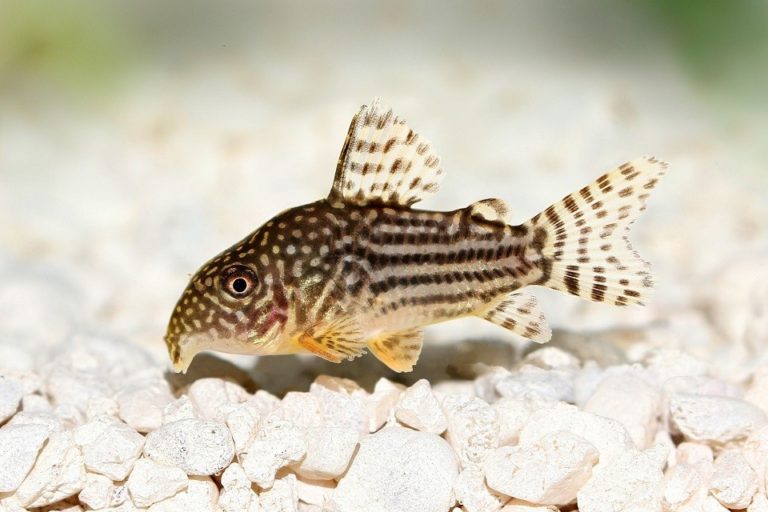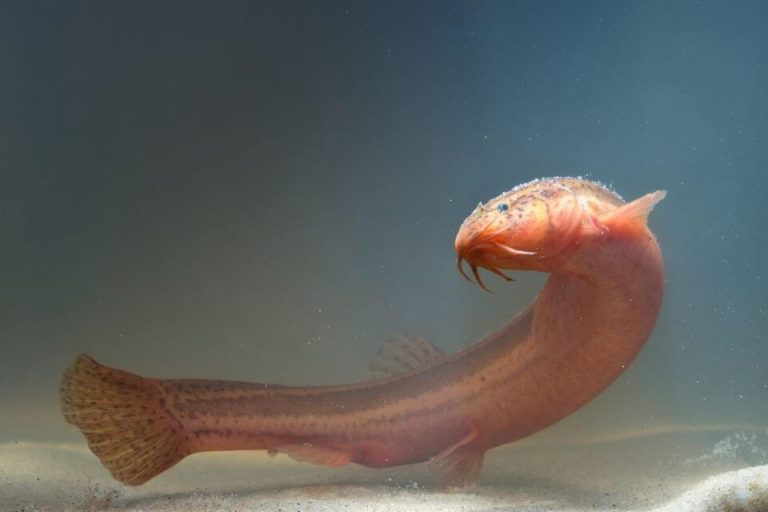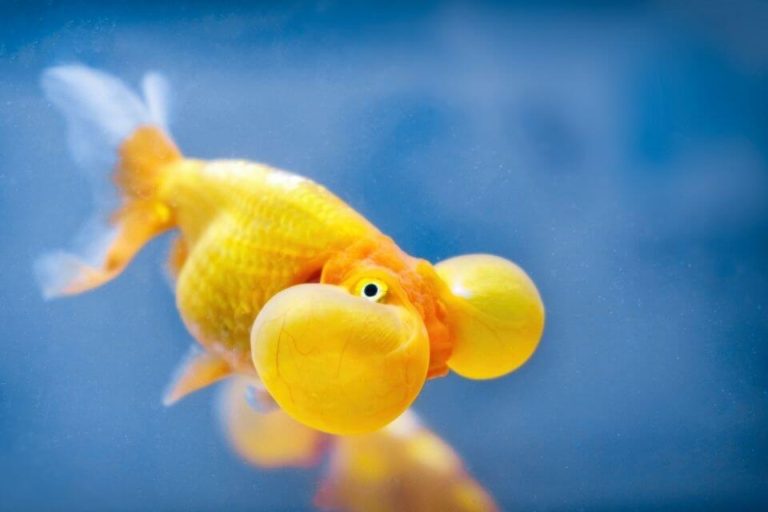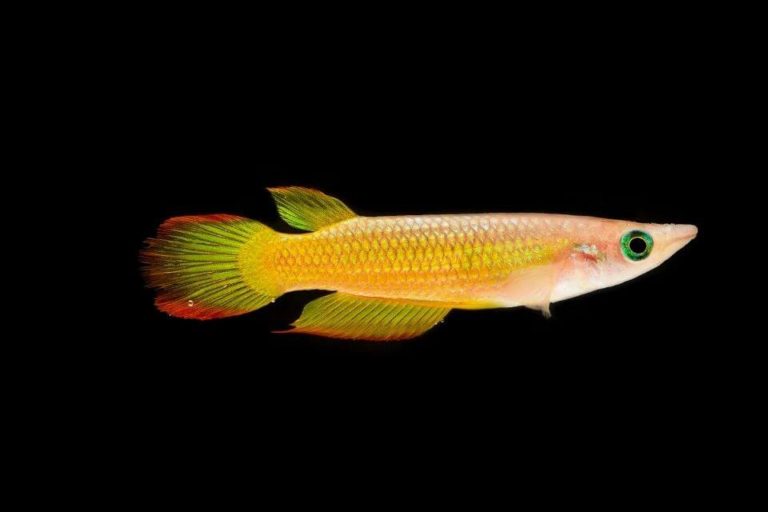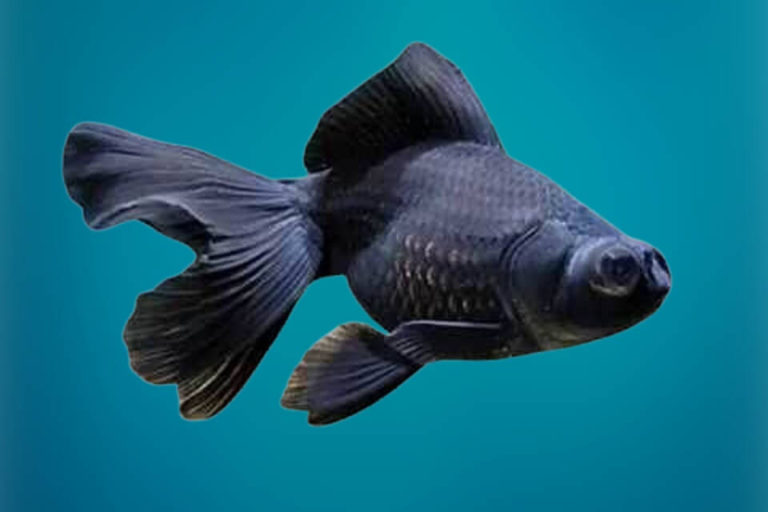Flowerhorn Cichlid Species Profile and Care Guide: Tank Setup and Diet

Beautiful, colorful, and large, the Flowerhorn Cichlid is a great fish for aquarium lovers old and new. If you are looking for a species that will provide a range of diverse beauty while being relatively easy to take care of, you’ve come to the right fish.
Their color patterns, behaviors, and hardiness have made the Flowerhorn Cichlid an all-time favorite amongst aquarists.
In fact, Flowerhorn Fish are the most sought-after fish of the whole Cichlid breeds, This affects their affordability and availability, although they are never too hard to find.
Below, you’ll find everything you need to know about how to properly care for this exquisite and long-lasting fish.
| Quick Facts: | |
|---|---|
| Common Names : | Flowerhorn Cichlid, Hua Luo Han Cichlid |
| Origin : | Man-made by Chinese aquarium enthusiasts |
| Family : | Cichlidae |
| Scientific Name : | - |
| Care Level : | Moderate |
| Temperament : | Aggressive |
| Social : | Territorial |
| Diet : | Omnivores |
| Size (average) : | 16 inches long |
| Lifespan : | Upto 10 years |
| Breeding : | Egg layer |
| Minimum Tank Size: | 70 gallons |
| Tank Environment : | Freshwater, Sandy and grave mixed substrate, Rocks and Caves, Driftwood, Live aquarium plants (strong-rooted) or Plastic aquarium plants |
| Temperature : | 78 – 86 °F (20 – 26 °C) |
| Water Hardness : | 9 - 20 dGH |
| Water pH Level : | 6.5 - 8.0 |
Overview of Flowerhorn Cichlid
As an exotic and stunning species, the Flowerhorn Cichlid is one of the most unique in the fishkeeping industry due to its origins. This is mostly because it is actually a man-made species of fish.
Fishkeeping enthusiasts have selectively bred different types of South African Cichlid species to create the Flowerhorn Fish, which is desirable because of its unique color combinations and steadfast temperament.
With the right care and tank conditions, they can live for many years. They are adaptable to many different types of freshwater fish that you may wish to keep alongside your Cichlids in your tank.
One thing to keep in mind, though, is that Flowerhorn Cichlids are on the larger side, meaning that they may not live well with smaller species.
Origin, Distribution, and Availability
It is hard to trace the exact origins of this fish and when it came into existence. What is known is that the Flowerhorn Fish is a fairly new species, hitting the markets for the first time around 1996.
These Cichlid species are a result of meticulous selective breeding by Chinese aquarium enthusiasts.
They are not typically found in the wild, although some fish keepers have released them into waters of their own accord. They are closely related to several different South African Cichlid species and retain a lot of the same behaviors and growth patterns as their natural counterparts.
Since they are so popular and not too difficult to breed, the Flowerhorn Cichlid is found in almost every fish store across the globe. You should not have a hard time tracking down one or two of these beautiful fish for your own personal tank.
Flowerhorn Cichlid Typical Behavior
You can expect the typical behavior and temperament of Flowerhorn Cichlids to be much like their Cichlid counterparts. Many experienced aquarists will compare their behavior to Jack Dempsey fish or Green Terror Cichlid.
Like others of their kind, Flowerhorn Fish tend to become aggressive when they feel that their food or territory has been threatened. They may not show kindness towards other species, at least when they first come together in the same tank.
There are ways to lessen these aggressive behaviors. By keeping them together in male-female pairs, you can maintain a new level of peace in your aquarium. Make sure to limit them to just two fish, however, because they are not shoaling fish by nature.
They swim quite slowly and can be fun to watch. You will find them in all parts of the tank, from the surface to the substrate. These big, bulky creatures can make a diverse addition to your tank as long as you know how to manage their behaviors.
Characteristics of Flowerhorn Cichlid
Flowerhorn Cichlids sport uniquely-shaped bodies and a number of colorful patterns to make them stand out from the rest. Their bodies and large bulbous horns make them easily identifiable and very desirable.
– Appearance, Colors, and Special Markings

The most noticeable feature of the Flowerhorn Cichlid is its bulged-out head. It is named after this bulge, which can resemble a rich round flower about to bloom. Along with their bulbs, other noticeable features include their long and thin bodies.
Sometimes they resemble a disc in shape as their bodies are almost flat from side to side.
Under the large horn are a pair of deep-set eyes, and not far behind that is the long dorsal fins. Both the dorsal and anal fins stretch outward and end in braids, which just adds to their stunning beauty.
Their bodies are adorned with rich patterns and colors. It is difficult to say exactly what the colors of your Flowerhorn Cichlid will be, as they sport a variety of bright colors, stripes, and spots. Some of them are even mono-colored.
If you are looking for a fish that will stand out from the rest in every way possible, different breeds of Flowerhorn Fish are sure to be a satisfying aquarium addition.
– Size
Flowerhorn Cichlids grow quite rapidly after they are born. Once they reach adulthood, they will have grown up to 16 inches in length.
This makes them one of the most sizable fish that you can have in your freshwater tank, and you will certainly need to accommodate for their size by having plenty of gallons of water available to them.
– How Big Does a Flowerhorn Cichlid Get?
Flowerhorn Cichlids can grow up to a foot and a half, putting them on the same scale as most other Cichlids in their family.
Many people are surprised at how big these beauties can get, which is an important thing to keep in mind when setting up your tank conditions for the first time.
– How Fast Do Flowerhorns Grow?
When they are fry, Flowerhorn Cichlids grow at a rate of one inch per six weeks. In smaller aquariums, they can grow up to 10 inches by the time they reach adulthood.
– The lifespan of Flowerhorn Cichlid
Flowerhorn Cichlids are some of the hardiest and adaptable fish species on the freshwater market. With the right conditions and easy maintenance, they can live up to 10 years or more in a suitable aquarium.
Healthy Cichlids live past a decade and can provide many benefits to the aquarium as a whole.
Aquarium Care and Tank Conditions
As with all fish and underwater species, the Flowerhorn Cichlid can only thrive and survive when it is in the right aquarium. Your tank conditions and setup are the most vital parts of taking care of any fish; thankfully, while the Flowerhorn Fish has needs, it is quite an easy fish to take care of.
There are specific water conditions and gallon sizes to pay attention to if you plan on housing one or more Flowerhorn Cichlids.
– Tank Conditions and Care
Flowerhorn Cichlids are almost exclusively bred in captivity, and they will likely remain that way as it is the healthiest environment for them. It can be hard to mimic a “natural” environment because of this, but there are a few essentials that we know of.
For the most part, they prefer the same kind of habitat as other Cichlids in their family.
You will want to mimic warm and hard tropical waters with slow-moving currents and lots of places to seek shelter. When it comes to the substrate, try adding sand or gravel as they will spend some time on the bottom of the tank looking for food.
– Flowerhorn Tank Size
Tank size is perhaps the most crucial element of tank setup that’s required to keep your Flowerhorn Fish in good health. Remember that they are large fish that move around a lot and so they demand a lot of space to prosper.
For this reason, it is recommended that the proper Flowerhorn Cichlid tank size is at least 70 gallons per fish. If you plan on keeping a pair of Flowerhorn Cichlids together, the tank should be no smaller than 140 gallons in size.
– Tank Setup
Clean water with a decent flow is perfect for any average Flowerhorn. You will want to invest in a powerful water filter as frequent water changes and a clean environment are necessary for these fish.
Unfortunately, Flowerhorn Fish can be a bit messy as well, which might require more cleaning than most.
Single-colored gravel and rocks are perfect substrates for Cichlids. Be sure to add driftwood and other objects to the bottom as this fish likes to find shelter quite often.
Make sure the decorations you add to the tank are not too light, as the Cichlids can bump into them and knock them over.
It is important to keep in line with their natural rhythms so they can have a long and peaceful life. The right plants and especially the right water conditions can have a huge impact on the life of your fish, as you will see below.
– Suitable Plants
Flowerhorn Cichlids are like their relatives in that they love to dig up the substrate and break up plants. You can have live plants in the tank, but make sure they do not pose a danger to your Cichlids or any of the other fish if they are uprooted.
You may have good luck with Anubias and Amazon Sword, although these fish will most likely prefer driftwood and rocks instead.
TIP: Using live plants in your aquarium is optional, and you can use artificial plastic plants. But unlike plastic plants, live plants maintain the water freshness by adding oxygen, utilizing nitrates, and removing carbon dioxide from the water. Hence the live aquarium plants are recommended.
– Water Conditions and Parameters
The right water conditions are essential for the long and healthy life of any Flowerhorn Fish. It is highly recommended to follow these parameters quite closely before you plan on keeping these Cichlids on your own:
- Water Temperature: As they are most comfortable in warmer tropical waters, it is important to keep your water levels between 78 to 86°F. This is a little bit of a range to work with, so it shouldn’t be hard to keep your Flowerhorn Cichlids comfortable.
- Water Acidity: Water acidity can have one of the biggest effects on the health of your fish, so keep it pretty consistent. A level between 6.5 to 8 pH is preferred.
- Water Hardness: You have a bit more flexibility when it comes to the hardness levels of your water. As long as you maintain a range of 9 to 20 dGH, your fish should continue to be healthy and comfortable.

Diet and Feeding
Like most Cichlids, the Flowerhorn has an enormous appetite. In order to maintain such a large size, they must eat multiple times throughout the day. They will eat just about anything that they can get their mouths around, so be careful not to surround them with smaller fish that you don’t want to see eaten.
While they eat multiple types of food, there are a few major food types that you should feed them most often. Try to include a variety of protein-rich foods for them to eat, including:
- Pre-made Cichlid food
- Bloodworms
- Shrimp
- Dried crickets and grasshoppers
- Small fish
- Gammarus
- Other worms
Make sure to supplement their meat-heavy diet with other forms of nutrition such as:
- Leafy plants
- Pre-packaged food
- Live plants in the tank
You should feed your Flowerhorn Cichlids about three times a day. It should take them no more than five minutes to eat all of their food. If any leftover food is found at the bottom of the tank, you are giving them too much and this can cause aggression between the Cichlids and other fish.
Flowerhorn Cichlid Common Diseases
Generally, Flowerhorn Cichlids are very strong and healthy and do not require too much care. You should not be overly concerned about the likelihood of this fish contracting an illness or a disease, as long as you follow proper tank maintenance needs and keep their environment clean.
Some health issues to look out for may include:
Physical Injury
Cichlids are large, bulky, and sometimes bumbling fish, and they are prone to hurting themselves when there are too many objects in the tank.
As they dig around the substrate, they could get hurt on a rock or get hit with something sharp from the tank. Make sure there is no risk of injury when setting up your tank for the first time.
Food Poisoning
If your fish are having a bad reaction to their food, it may be poisoned. The simplest fix is to replace their food source with a completely new batch of ingredients. If this does not solve the issue, they may be poisoned by an imbalance of chemicals in the water.
Gender: How Do I Know If My Flowerhorn Is Male or Female?
There are not a lot of differences between the male and female Flowerhorn Cichlid. The biggest difference is in size. Typically, males will be a few inches bigger and longer than females.
The males also tend to become more aggressive, especially during feeding or when the breeding season comes around. They display slightly different behaviors around breeding time, which will be discussed in the next section.
Flowerhorn Cichlid Breeding
It is very easy to breed Flowerhorn Cichlids in the tank. You should be able to accomplish this without issue as long as you make some preparations beforehand.
First, you must have a large breeding tank separate from the main tank. Between 1.5 – 2 years old, they should be ready for breeding. The breeding and spawning process is quite simple and usually happens on its own without you having to intervene.
Once breeding has occurred, the female will lay her eggs on a smooth substrate surface. You can expect up to 900 eggs at a time.
In some cases, the male may become aggressive. It is important to place a divider between male fish and the eggs when this occurs. Juveniles will hatch over the next few days and start to swim around with active curiosity. Feeding them shrimp and small fish is ideal.
The parents will look after them for about two months. You can start moving the fish back to the common tank at this point. Within 6 months, the babies will start to grow into their recognizable Flowerhorn Cichlid appearance.
Flowerhorn Tank Mates
What are the best tank mates for a fish as large and aggressive as the Flowerhorn Fish? Fortunately, there are many species of fish that can cohabitate quite peacefully with this fish.
While it is impossible to say what kind of fish they would get along with within the wild, there are certainly several tankmates that can work out. The best mates are fish who are similar in size and behavior to your Flowerhorns. This may include:
- Plecos
- Pirapitinga
- Jaguar Cichlids
- Oscars
- Giant Gourami
- Armored Catfish
- Spotted Hoplo Catfish
- Bushynose Catfish
You do not want to pair your Cichlids with small or slow fish, as they will likely be attacked and eaten by your Flowerhorns.
Frequently Asked Questions
There are many commonly asked questions about the beautiful Flowerhorn Cichlid. You will find the answers to many of them below.
Is Flowerhorn a Hardy Fish?
Flowerhorn Cichlids are some of the hardiest freshwater fish species in the aquarium fish market. With good tank conditions and care, they will need relatively little looking after. You can expect a healthy Flowerhorn Fish to live up to 10 years in your tank.
Why Are Flowerhorns So Aggressive?
Flowerhorns are like most Cichlids in their family, who tend to get aggressive and territorial. In some situations, these fish will fight over food and territory. They also tend to attack smaller and slower fish when they feel threatened.
Are Flowerhorns Dangerous?
You should exercise a bit of caution when reaching into a tank with Flowerhorn Cichlids. If they are hungry or feeling threatened, they can bite your hand. Some people have compared them to Piranhas, but they do not tend to attack people quite as consistently.
You can also form a bond with these fish which will make them less likely to bite.
Do Flowerhorns Have Teeth?
Flowerhorn Fish have rows of sharp teeth that can hurt when they bite your hand. Keep in mind that this fish is a predator by nature and may attack anything that moves near it.
Their teeth will become visible as they grow, giving them a menacing appearance when they go in for the attack.
Can Flowerhorn Live With Cichlids?
It can be hard to find decent tank mates for the Flowerhorn Cichlid. Usually, the best fish to go with a Flowerhorn fish is another Flowerhorn, but only one. By keeping them in pairs, you can reduce their aggression levels and keep them peaceful.
It is possible to pair them with other Cichlids of the same family, but it is important to research each individual Cichlid type before considering them for your tank. Most Cichlids are aggressive, which makes keeping them together difficult.

Can We Keep Oscar And Flowerhorn Together?
Flowerhorn Cichlids and Oscars usually get along quite well. It is important that the Oscar it lives with is fully grown. Since they are so large in size, the Oscar will not look like food to the Flowerhorn fish.
And since Oscars are generally peaceful and non-confrontational, there will probably not be any territory issues either.
Can I Feed My Flowerhorn Guppies?
You can absolutely feed guppies to your Flowerhorn Cichlids. These fish need a variety of live protein sources to remain healthy, but not all species of guppies will be recognized as food.
Make sure that the guppies you are feeding your Cichlids are already free of diseases and parasites.
Why Is My Flowerhorn Turning Black?
Flowerhorn Cichlids have an incredible way of communicating when they are stressed. Under times of pressure or illness, they will develop black spots and blotches on their body.
This can happen as a result of extreme water condition changes or the addition of something new to the tank.
If your fish is showing signs of stress, you should address it immediately.
How Much are Flowerhorns?
Mature Flowerhorns can be expensive, although they are widely available in most freshwater fish locations. This is because there is such a wide genetic and aesthetic variety of these Cichlids that they must each be priced individually.
Depending on the color scheme of the Cichlid, you can find a mature fish within a price range of $20 to $150.
Can You Eat a Flowerhorn?
It is a little-known fact that next to tilapia, Cichlids are some of the most widely consumed fish in the whole world. You may not typically see someone eating an expensive luxury fish that is better kept in an aquarium, but it is possible.
Most people decide to eat other species of fish that you can find at the grocery store.
Final Thoughts
The Flowerhorn Cichlid is a unique man-made fish that is a popular choice for large aquariums. Although they can be aggressive and large, they are fairly simple to care for.
You can find an enormous diversity of colors and patterns among Flowerhorn Fish, which is one reason why they are so highly desired by aquarists around the world.
If you are considering this beautiful and exotic fish for your aquarium, make sure you have the right tank conditions and setup to ensure its survival. You can keep a hardy pair of Flowerhorn Cichlids for years and years of personal enjoyment!


